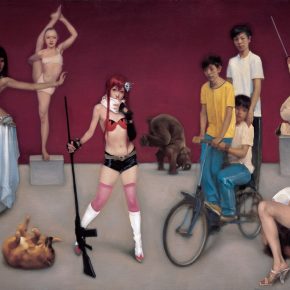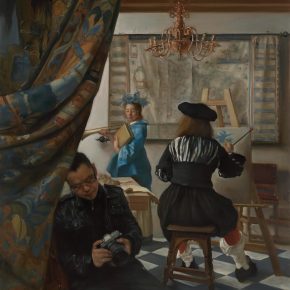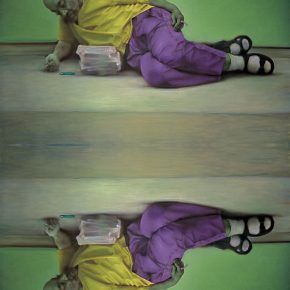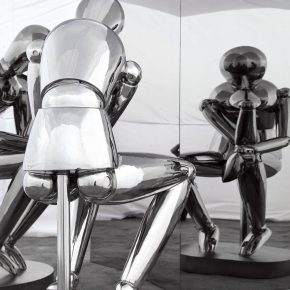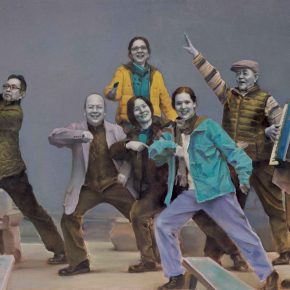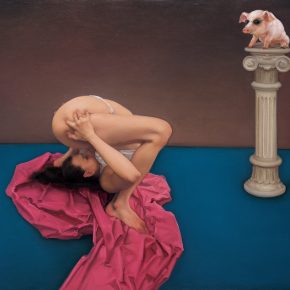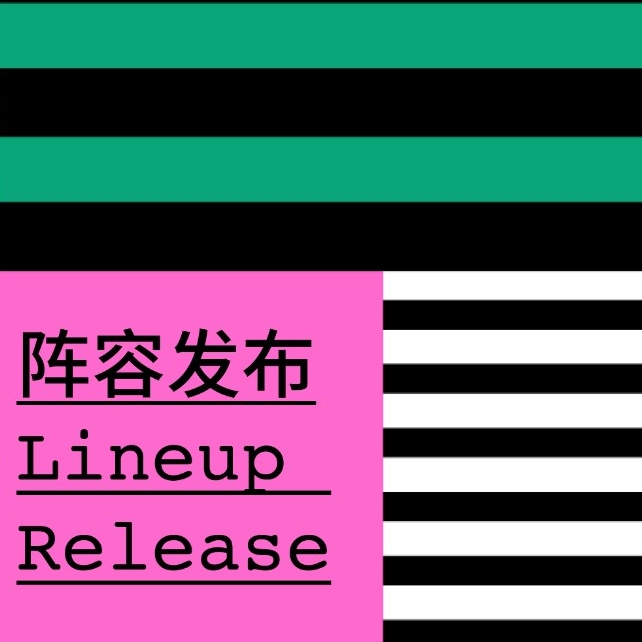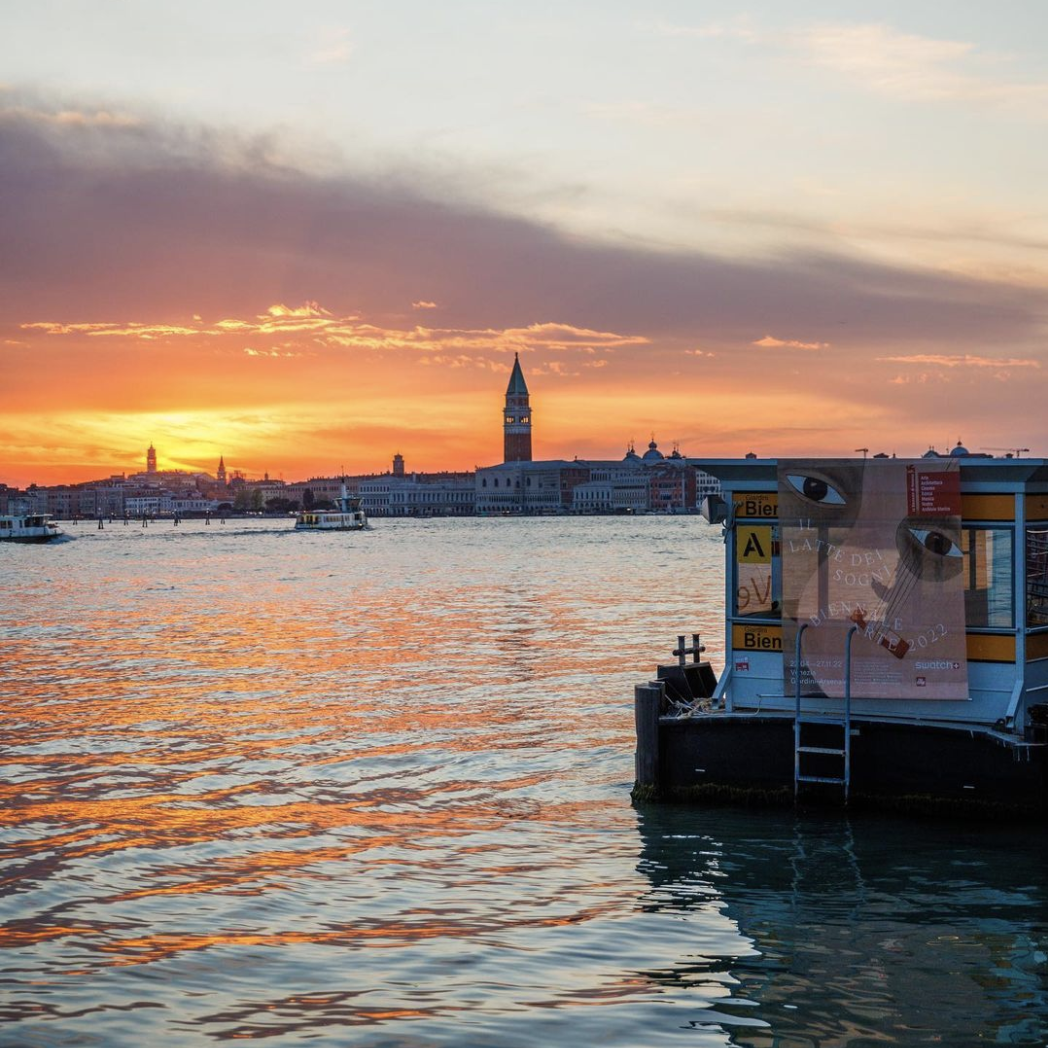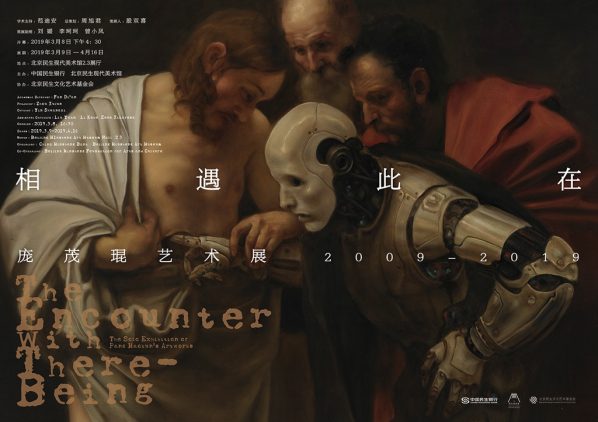
Minsheng Art Museum announces “The Encounter with There-Being: the Solo Exhibition of Pang Maokun’s Artworks” opening on March 8 in Beijing. With Fan Di’an serves as the Academic Chair for this exhibition, it is curated by Yin Shuangxi and it will the largest solo exhibition of Pang Maokun over the forty years of his oeuvre. The exhibition will focus on Pang Maokun’s creations in the past decade while comprehensively displaying his rich creative process and artistic exploration.
Pang Maokun: The Mirror Image in Dialogue between History and the Present
By Fan Di’an
This exhibition presents series of Pang Maokun’s artworks all together in abundance, which shows his persistence and dedication in pursuing art for decades. It’s hard to imagine how he has drawn so many exquisite works under the burden of busy teaching and excess administrative management in art institute. The first thing that implies is the depth of his addiction in painting. His series of works gathered together displays a magical world, where the ancient and the modern interlaced, the reality and the fiction blended, the history and the present intertwined, forming a grand surrealistic spectacle.
Classics can be regarded as a kind of mirror image. Looking at ancient classical works is like looking at a mirror, in which we can see ourselves, from the visual to the cultural in dialogue. In comparison with the historical, social and living contexts depicted by classical works, we can also see today’s social reality, thus forming a unique way of viewing and interpreting contemporary transformation. This is a way of illustrative explanation through images. In Pang Maokun’s latest works, the reinterpretation of classical masterpieces is not only a subjective understanding and recognition, but also a continuous integration of the past and the modern. The historical objects in the painting are no longer objects, but transform into a relationship, in which lies both historical reality and the reality we understand. Through classics images, Pang Maokun creates the mirror image that belongs to him and is concerned about the contemporary existence.
In modern times, many Western artworks have their historical associations with classic paradigm, usually deconstructing the old classic images and making the new ones. China also has similar tradition that requires copying and imitating the masterpieces, their painting styles, techniques and skills in particular. Pang Maokun surpasses the two traditions of the West and China, and develops the accepted form of classical painting as a way of cultural expression. As an imported product, oil painting has developed in China for only a hundred years. Thus, for Chinese artists, a great number of classical masterpieces in the West art history of thousands years are not only regarded as Painting Manual Of the Mustard Seed Garden, but also represented as an ideal paradigm, integrating tradition and modern, eastern and western. Pang Maokun tries to skillfully “copy classical masterpieces”, but at the same time deconstruct it and integrate contemporary concepts into the traditional language of classical painting. In his paintings, there are not only distinctive personal traces, but also the time mark of inheritance, staggering and juxtaposing, strangeness and familiarity, looking outside and introspecting, seriousness and humor... As he said, “folding generates new aesthetic connotations”. In his artworks, he does not only show a Chinese artist’s mastery of techniques of Western classical oil painting, but he also completes the contemporary transformation from the West to China, from the ancient to the present in vivid colors. History and classics have changed into an artistic portrayal of contemporary social and cultural psychology: modern people in the 21st century have entered the Bible’s Apocalypse, aerial photography aircraft have recorded the scene in Velasquez’s painting, Utopian Garden of Eden has been endowed with cyberpunk-like science fiction elements, the boundaries and shackles of traditional thinking have been broken through in his artistic creation. Pang Maokun himself, like an Origami artist, turns the painting into a Moubis ring. Historic images and contemporary things merge into surreal scenes with realistic painting techniques. The past, the present and the future never encounter and move towards a meeting point of multiple narratives, thus realizing a “synchronic order” in his works. In his artwork, he reconstructs the classical meaning, making the two-dimensional image in a multi-dimensional space and time, in which the “past” and the “future” coexist.
Nowadays, people are living in an era of visual culture and information transmission explosion, which brings about much more information and choices meanwhile people loses their spiritual pursuit under the surface of democracy and freedom. When contemporary people can choose their own favorite topics, they are immersed themselves in their own world and trapped in the “information cocoons”, thus losing the self-authenticity. Pang Maokun has an awareness of reflecting the modern selfhood and society in his artistic creation, who accurately masters the relationships between individual and community, the tradition and modern. In other words, he knows that only integration of himself into the relationships can he make the painting meaningful and novel. Thus, he intends to integrate the language of western classical painting into the contemporary atmosphere of Chinese art to get rid of former ways and ideas of painting and re-examine and re-interpret the reality, therefore, it integrates his own thinking into the paintings to be the visible selfhood. The misplaced sense of traversing and dramatic scenes in his paintings are just like spiritual experience, which get out of the “cocoons” of academicism and realism in the process of pursuing the modern proposition of oil painting language and weave a magic web that breaks the boundaries between the outside world and the inside one in the image and then make the viewers think, reflect and inquire. Just as the poet T.S.Eliot put that the tradition is far from “blindly following the former generation” or “indiscriminately insisting on the former successful methods.”
It should not be regarded as the impediment to the development of ability and the shadow needed to get out of it, instead it “contains a wide array of meanings.” Tradition is not static but dynamic and it constantly needs corrections in the way where are many new elements joining in and then become parts of it. In order to fully understand the significance of classical art history to the contemporary society, we need to go farther rather than merely approve that “everything belongs to the culture.” As an Chinese painter, the thought and attempts of promoting the development of modern oil painting is the self-reflection of self-identity as well as cognition. Pang Maokun’s paintings are the inheritance and praise as well as the exploratory questions of the tradition and the modern. He intends to construct a new connotation and mechanism function of the “tradition” concept the in his artistic creation and explore the new ways of oil painting in China in the contemporary context.
As an artist, everything he painted comes from the visual observation and then turns back to it. When looking at the painting, the relationships between the viewers and people painted in the picture are just like the reflection of mirror, which not only reflects the mindset of selfhood, but also the contexts of this time. Pang Maokun reckons his artistic creation as self-observation, which centers on the eternal topic of “portraits of modern times” and it moves from the rustic to the modern, theater to maze, ego to super-ego in the process of repeat observation. The self-observation can be traced back to the mythology of ancient Greece, The Metamorphosis of Ovid wrote that the young Narcissus refused the love of fairy lived in the mountain for his handsome appearance, who was so obsessed with his own appearance that he turned into the narcissus finally and looked at his reflection in the water all the time. This allegory records the process of human’s self-understanding, which echos the “ appreciating the shadow of oneself and loving oneself from his reflection in the mirror” from the Ode to Embroidery by Zhang Shuai of the Southern Dynasty, it demonstrates that the relationships between the outside world and the inner world, selfhood and other people have been a philosophical proposition of “idea” paradigm in the views of the ancient people. However, the relationships between selfhood and selfhood, selfhood and the world, the reality and the virtuality are not merely an old-fashioned topic, the tendency that human draws back his sentiment from other people and the outside world and then puts it into himself becomes intensely as the development of modern information explosion and social networks. Pang Maokun accurately recognizes and feels the relationships between human’s existence and the human itself so his artistic creation is the exploration of visual ways and orders on the level of art as well as his thought and response to the social phenomenon as an artist.
For artists, the representation of people, whether it is to explore the soul or only as the object of expression, is the most intuitive technique of expression. Over the years, Pang Maokun creates and represents a huge number of portraits and sketches, but he does not simply stay on the vivid portrayal, his mastery of tone and shade not only contains the ways to introspect the ontology, but also involves the context of social symbols, whereupon the canvas is as a medium of “camera obscura”, allowing the “ego” in the canvas reflect the “mabatma” of the time. From the Stage, You Guan (Viewing while walking), Flowers in the Mirror several years ago to the resent series of Maze Mirror, Folded Portraits, he goes deeper and deeper into the discovery of consciously rebuilding the visual order, constructing a mirror house of personal artistic style, in which each painting is one of the mirror that the viewers can both see the projection of past and the born of newness. The paintings as respect to painting discover the dialectical relationship of subject and object, space and time, eternity and moment in the specific history and release the multidimensional, meaningful reengineering feelings, which make the ambiguous “original intention” of cultural text reveal the the awareness of “original intention.” American scholar Clifford Geertz regarded culture as a “collection of texts”, which extended a new way of seeing, so that the collecting texts is of symbolic state that it could not be interpreted literally. Geertz describes his entire approach to cultural interpretation as “understanding everything that may related to it”. In Pang Maokun’s works, viewers can recognize most of the original paintings like The Betrothal of the Arnolfini, Las Meninas, Portrait of Innocent X, and the body actions like stand, sit down, outlook, pat etc, however the meaning and express concealing behind the “visual” could not simply appear on the canvas, the action of seeing becomes the digging of meaning, just like using the eyes to penetrate the text and canvas, to pierce the things behind the ornamental and formal surface, so that they could finally find “what it is talking about.”
The adoption of classical painting techniques makes Pang Maokun’s work seems to be the result of “slow work”. The spatial structure in the painting is complicated and confusing: subtle light is like the shadow of time flow, tonal variation is as psychological mood ups and down, the image of people and objects is like a dream... This slow pace of the painting rhythm makes people feel that Pang Maokun entered a tranquil world in the process of making the painting. Only there could he hear the echoes of his own heart. Only this subtle language can tell a rich story.
Preface
By Yin Shuangxi, the Curator for this Exhibition
Pang Maokun is praised for his sophisticated classical oil painting technique among Chinese modern oil painters. However, he is not a common realistic painter and his study on the western classical oil painting focuses on pursuing his own unique thinking, language and technique based on his understanding of the history of the western oil painting rather than imitating the classical art images. He keeps exploring the expression and presentation of classical oil painting language in the modern cultural context and integrates his own artistic creation into the reality. He gazes and describes the reality as a detached onlooker, which adds a sense of strangeness and distance to the originally quiet and harmonious classical painting style to create a kind of modern painting of symbolism and surrealism based on the realistic language. Therefore, Pang Maokun’s artistic ideal and temperament do not only represent the formation of his own style but also point at this historic subject “the value and significance of Chinese oil painting in the modern art.”
Pang Maokun’s forty-year painting career is closely related to the historical changes of Chinese art from exclusiveness to openness and single to variety in the late twentieth century. In recent ten years, he has held many important solo exhibitions such as Mythology of Today(2010, Shanghai), Gaze in Silence(2011, Guangdong), Viewing the Floating World(2013, Beijing), Maze: Visual Order and Graphic Production in Pang Maokun’s Art(2015, Beijng), The Mystery of Freehand Sketching(2016,Wuhan), Fold-away Eden(2017, Changsha), Realistic History(2018, Florence, Italy). These exhibitions demonstrate Pang Maokun’s passion for his country and people as well as his compassion and attention to the life and destiny of common people. The contemporaneity comes from the history and classics, Pang Maokun makes cultural comparisons between oil painting, this western traditional artisitic form and Chinese reality, which refers to how China gets on well with the world and highlights Chinese cultural characteristics by transcending western discourse. His artistic works demonstrate his observation and study of the common people’s daily life as well as his emphasis on the irreplaceable values of “concrete oil painting” in reflecting the times and advancing the Chinese modern culture development. His concrete oil painting points out the history and reality, which vividly reflects the complex social landscapes and people’s images in this time.
This exhibition is the summary and review of Pang Maokun’s ten-year artistic creation, which exhibits his main creation works and offers us an opportunity to encounter with his works. This exhibition shows Pang Maokun’s vigorous creativity, active innovation consciousness and sophisticated painting technique in order to highlight the “aesthetic ideal”, “Chinese spirit” and “the theme of human” of his art and reveal the significance of “humanistic ideal” of western culture since the Renaissance and “humanistic care” of Chinese modern intellectual artists in the artistic creation. The abundant works and distinctive styles of this exhibition demonstrate the updating life experience and thought of Pang Maokun, and that is “the unfold of the existence” called by Martin Heidegger. It is “Dasein” that unfolds the sheltered existence, “which gathers all kinds of lives and their association ways into one entity. These potential associations like life and death, weal and woe, honor and disgrace are emerged in front of human in forms of destiny whose coverage is the whole world.” We encounter with “Dasein” in Pang Maokun’s artistic works, which is reflected in the creation themes of different periods in Pang Maokun’s ten-year creation such as Coincidence, Encounter, Viewing the Floating World, Passerby, Mirror, Time-travel, it is the encounters of the ancient and modern as well as the reality and dream and entails the meanings of life and living.
February 15th, 2019
Search and Reconstruction
By Zhou Xujun
As the first exhibition of 2019 in Beijing Minsheng Art Museum, “The Encounter with There-Being: the Solo Exhibition of Pang Maokun’s Artworks” will finally be presented to the public after a long period of preparation. It is the latest achievement of “Artist’s Case Study Series” in Beijing Minsheng Art Museum as well as the largest solo exhibition of Pang Maokun’s forty-year artistic creation.
The “Artist’s Case Study Series” in Beijing Minsheng Art Museum is an exhibition and research direction based on the artist’s case study, which conducts a deep study and exhibition for artists with a keen insight, constant thought processes and innovation in contemporary Chinese art and apparently Pang Maokun is an important artist in this case study series. Pang is praised as “a leading painter whose painting style is close to classicism among Chinese contemporary painters,” his years of artistic creation systematically presents his in-depth study on western traditional oil painting and his constant exploration and innovation. We recognize Pang’s unique ideas and ways of observing the world behind his exquisite paintings. He gazes and describes the classical and contemporary as a detached onlooker and creates a contemporary painting of symbolism and surrealism based on real life over the last 10 years. “Pang Maokun is a contemporary painter who makes innovation through inheritance, his artistic ideal and temperament not only represents the formation of his own style but also points to this historic subject “the value and significance of Chinese oil painting in contemporary art.” Commented on the exhibition curator Yin Shuangxi.
In fact, Pang’s painting career over forty-years is closely related to the historical changes of Chinese art from exclusiveness to openness and from a single vision to a variety view since the reform and opening-up. His in-depth study and unremitting innovation in the field of oil painting typically shows the knowledge and understanding of Chinese artists of his generation whose cultural ideal is to construct an oil painting style with Chinese cultural characteristics. Pang Maokun is not only teaching oil painting in the Sichuan Fine Arts Institute but he is also the president of Sichuan Fine Arts Institute, his dual roles of artist and art educator offer us multiple perspectives to learn about the development of oil painting in China in the new era. Thus, Pang Maokun’s exhibition is more than an artist’s case study, which reflects the constant exploration and effort of oil painting in a Chinese contemporary cultural context.
This exhibition focuses on Pang’s artistic works over the last ten years in order to demonstrate his rich artistic creation and exploration in retrospective exhibitions and a modern exhibition mode. The exhibition is divided into eight units: Stage series, Viewing the Floating World series, Flowers in the Mirror series, Maze series, Folded Portraits series, Alienation from Everydayness series, Fairytales of Today series, Selfie series, each unit echoes his former solo exhibitions and contains profound philosophical reflections on “observation and representation,” “virtual and theater,” “mirror and dasein,” and “observation and freedom.” This exhibition aims to highlight the “aesthetic ideal”, “Chinese spirit” and “the theme of human” of Pang’s art and reveals the significance of the “humanistic ideal” of western culture since the Renaissance and the “humanistic care” of Chinese contemporary intellectual artists during their artistic creation and sparks a public discussion about the contemporary trend in oil painting in China in the twenty-first century. We bet this exhibition will not only be a visual feast but also a grand meeting to exchange ideas and thoughts.
February, 2019, in Beijing
About the exhibition
The Encounter with There-BeingThe Solo Exhibition of Pang Maokun’s Artworks
Organizer: Beijing Minsheng Art Museum, China Minsheng Bank
Co-Organizer: Beijing Minsheng Foundtion for Arts and Culture
Acdemic Director: Fan Di’an
Producer: Zhou Xujun
Curator: Yin Shuangxi
Assistent Curator: Liu Yuan, Li Keke, Zeng Xiaofeng
Dates: 2019.03.09-2019.04.16
Opening: 2019.03.08 16:30
Venue: Gallery 2, 3, Beijing Minsheng Art Museum
Courtesy of the artist and Minsheng Art Museum, for further information please visit www.msam.cn.


